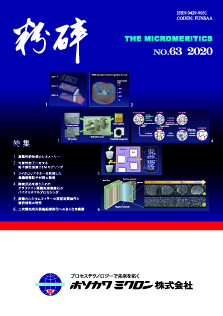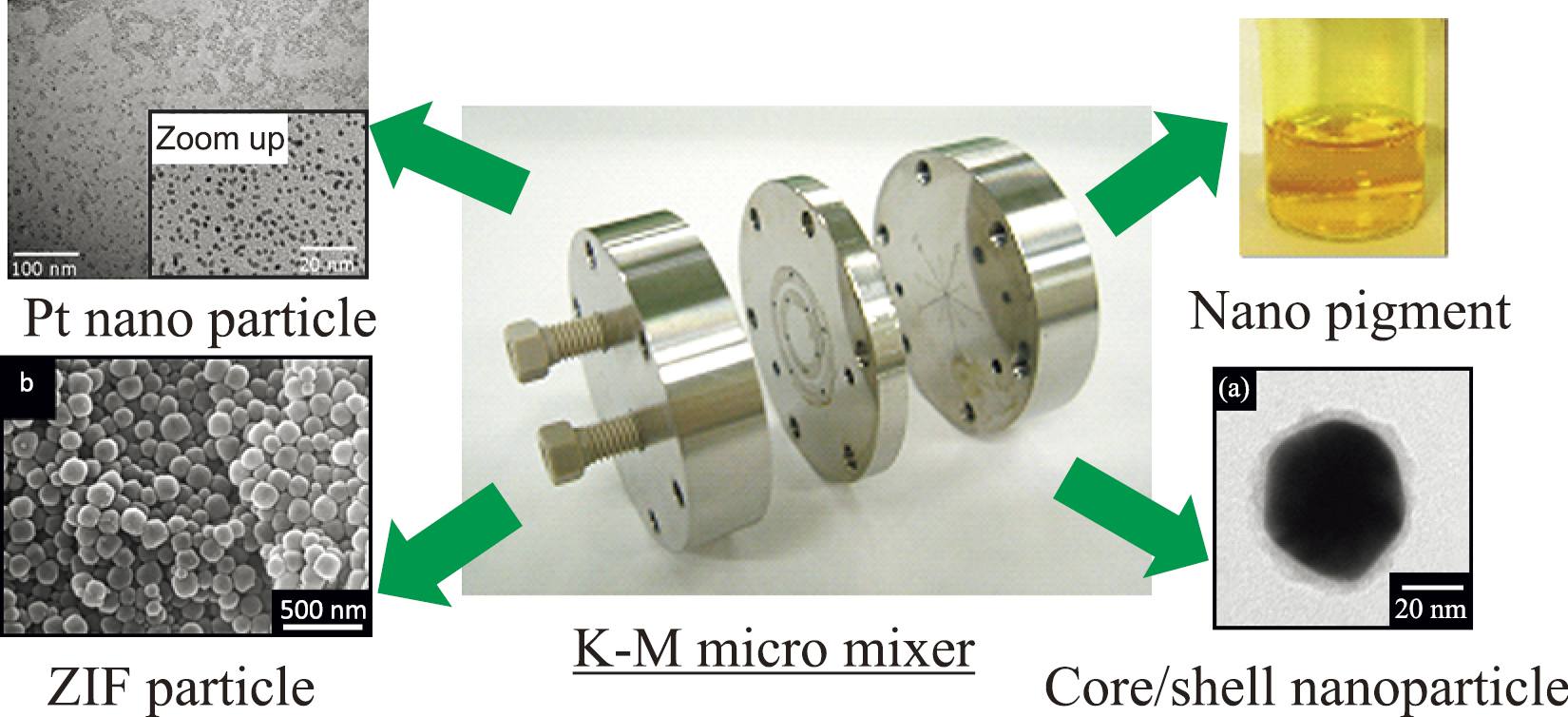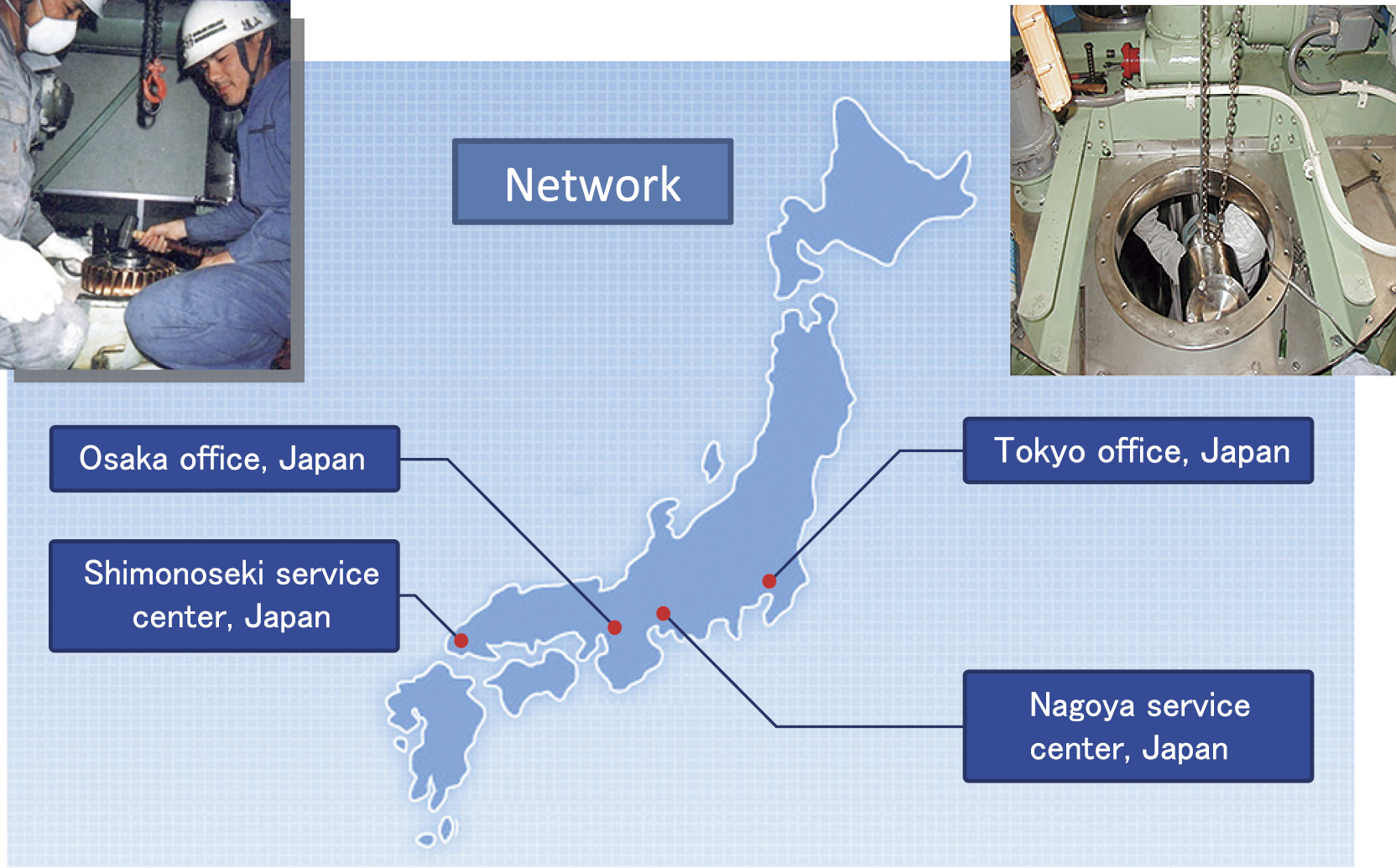- |<
- <
- 1
- >
- >|
-
2020Volume 63 Article ID: 2020001
Published: December 15, 2019
Released on J-STAGE: December 15, 2019
Download PDF (1116K)
-
2020Volume 63 Article ID: 2020002
Published: December 15, 2019
Released on J-STAGE: December 15, 2019
Download PDF (2152K)
-
2020Volume 63 Article ID: 2020003
Published: December 15, 2019
Released on J-STAGE: December 15, 2019
Download PDF (2164K)
-
2020Volume 63 Pages 1-2
Published: December 15, 2019
Released on J-STAGE: December 15, 2019
Download PDF (1058K)
-
2020Volume 63 Pages 3-12
Published: December 15, 2019
Released on J-STAGE: December 15, 2019
Download PDF (1838K) -
2020Volume 63 Pages 13-19
Published: December 15, 2019
Released on J-STAGE: December 15, 2019
Download PDF (2447K) -
2020Volume 63 Pages 20-28
Published: December 15, 2019
Released on J-STAGE: December 15, 2019
Download PDF (1968K) -
2020Volume 63 Pages 29-36
Published: December 15, 2019
Released on J-STAGE: December 15, 2019
Download PDF (2328K) -
2020Volume 63 Pages 37-43
Published: December 15, 2019
Released on J-STAGE: December 15, 2019
Download PDF (1947K) -
 2020Volume 63 Pages 44-50
2020Volume 63 Pages 44-50
Published: December 15, 2019
Released on J-STAGE: December 15, 2019
Editor's pickAs the material for the anode of the LIB secondary battery, the natural graphite powders have been widely used and it is known that the spheronization of their particles is one of the key points to improve the energy density of the battery. Hosokawa Micron Group provides equipment and processes to spheronize the natural graphite, but it cannot be well explained by the prevailing spheronization mechanisms. In this article, a new phenomenon model is introduced and elucidated along with the history of spheronization equipment and their working mechanisms.
Download PDF (2157K)
-
2020Volume 63 Pages 51-60
Published: December 15, 2019
Released on J-STAGE: December 15, 2019
Download PDF (2757K) -
 2020Volume 63 Pages 61-66
2020Volume 63 Pages 61-66
Published: December 15, 2019
Released on J-STAGE: December 15, 2019
Editor's pickRecently, various types of functional cosmetics are on the market. This article handles a series of special cosmetics based on the concept of nano-DDS (Drug Delivery System) to improve the permeation of the active ingredient into the skin and pores using the biodegradable poly lactic-co-glycolic acid (PLGA). The PLGA nanoparticles have the characteristics of permeability to the stratum corneum and pores, and sustained release of encapsulated active ingredient. This article describes the effectiveness of using PLGA nanoparticles for the application of acne and other skin problems, hair growth, and eyelashes.
Download PDF (1534K) -
2020Volume 63 Pages 67-75
Published: December 15, 2019
Released on J-STAGE: December 15, 2019
Download PDF (2929K)
-
2020Volume 63 Pages 76-83
Published: December 15, 2019
Released on J-STAGE: December 15, 2019
Download PDF (2730K) -
 2020Volume 63 Pages 84-89
2020Volume 63 Pages 84-89
Published: December 15, 2019
Released on J-STAGE: December 15, 2019
Editor's pickThis article introduces an in-process particle sizer called IntelliSizer® which is designed for the efficient and reliable measurement of particle size distribution in the powder processing lines. It is capable of automatic evaluation of the background level and the data error and minimizing the operator’s intervention at the site. The device enables to automatically optimize the operating conditions of the machine using the measurement results of the particle size distribution. The measurement result of the particle size distribution is almost the same as the off-line measurement, and can be stably measured even in a long operation.
Download PDF (2454K) -
 2020Volume 63 Pages 90-96
2020Volume 63 Pages 90-96
Published: December 15, 2019
Released on J-STAGE: December 15, 2019
Editor's pickNowadays, the IoT technology has been drawing much attention in a various industrial field with the key word of the Fourth Industrial Revolution or Industry 4.0. This article introduces HOSOKAWA GEN4® as a total IIoT service for the purpose to meet the needs in the powder processing systems. It contributes to the improvement of process productivity by collecting the operation and product data using in-line sensors and analyzing the collected data by machine learning. In this article, a practical example of powder processing system applying HOSOKAWA GEN4® is introduced and the optimum operating condition is proposed using the machine learning.
Download PDF (2856K) -
 2020Volume 63 Pages 97-101
2020Volume 63 Pages 97-101
Published: December 15, 2019
Released on J-STAGE: December 15, 2019
Editor's pickFor the purpose to create new functional materials and improve their performance, the mechanical particle composing machines have been playing an important role by changing the physical, chemical, electrical and optical properties of the particles by composing different kinds of materials and processing single material. In this article it is reported that these mechanical particle composing machines have been used by over 100 users in various fields as a useful particle design tool. One of the features of these machines is that the mechanical energy is effectively applied to the individual powder particles. This article describes the transition of the machines and the future prospects.
Download PDF (2933K) -
2020Volume 63 Pages 102-106
Published: December 15, 2019
Released on J-STAGE: December 15, 2019
Download PDF (2255K)
-
2020Volume 63 Pages 107-108
Published: December 15, 2019
Released on J-STAGE: December 15, 2019
Download PDF (923K) -
2020Volume 63 Pages 109-111
Published: December 15, 2019
Released on J-STAGE: December 15, 2019
Download PDF (1171K) -
2020Volume 63 Pages 112
Published: December 15, 2019
Released on J-STAGE: December 15, 2019
Download PDF (718K)
-
2020Volume 63 Pages 113-115
Published: December 15, 2019
Released on J-STAGE: December 15, 2019
Download PDF (1928K) -
2020Volume 63 Pages 116-118
Published: December 15, 2019
Released on J-STAGE: December 15, 2019
Download PDF (1360K) -
2020Volume 63 Pages 119-121
Published: December 15, 2019
Released on J-STAGE: December 15, 2019
Download PDF (1533K) -
2020Volume 63 Pages 122-124
Published: December 15, 2019
Released on J-STAGE: December 15, 2019
Download PDF (1146K) -
2020Volume 63 Pages 125-127
Published: December 15, 2019
Released on J-STAGE: December 15, 2019
Download PDF (1179K) -
2020Volume 63 Pages 128-130
Published: December 15, 2019
Released on J-STAGE: December 15, 2019
Download PDF (1281K) -
2020Volume 63 Pages 131-132
Published: December 15, 2019
Released on J-STAGE: December 15, 2019
Download PDF (13911K)
-
2020Volume 63 Pages 133-134
Published: December 15, 2019
Released on J-STAGE: December 15, 2019
Download PDF (1058K) -
2020Volume 63 Pages 135-137
Published: December 15, 2019
Released on J-STAGE: December 15, 2019
Download PDF (1273K) -
2020Volume 63 Pages 138-139
Published: December 15, 2019
Released on J-STAGE: December 15, 2019
Download PDF (1010K) -
2020Volume 63 Pages 140-142
Published: December 15, 2019
Released on J-STAGE: December 15, 2019
Download PDF (920K) -
2020Volume 63 Pages 143-147
Published: December 15, 2019
Released on J-STAGE: December 15, 2019
Download PDF (3308K) -
2020Volume 63 Pages 148
Published: December 15, 2019
Released on J-STAGE: December 15, 2019
Download PDF (607K)
- |<
- <
- 1
- >
- >|






















